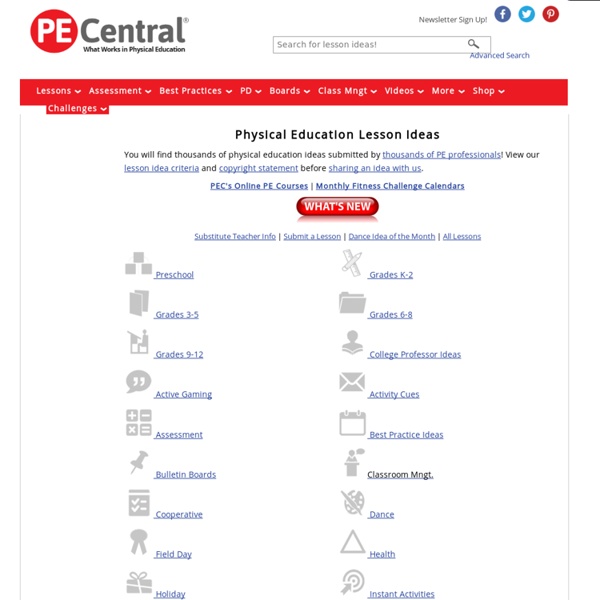



Understanding Inquiry in Health and Physical Education | Ophea Teaching Tools What is Inquiry-Based Learning “Inquiry-based learning is a process where students are involved in their learning, formulating questions, investigate widely and then build new understandings, meanings and knowledge. That knowledge is new to the students and may be used to answer a question, to develop a solution or to support a position or point of view. The knowledge is usually presented to others and may result in some sort of action." 1 Central to the Inquiry-based learning approach are the following key concepts: The process is grounded in the curriculum.The process provides the opportunity to extend learning.The process is recursive.The student is involved in the construction of knowledge.The process starts with questions/wonderings.Higher-order thinking is involved. Benefits of Inquiry-Based Learning Inquiry Framework for Health and Physical Education Figure 1: Inquiry Framework for Health and Physical Education: Six Components of Inquiry-Based Learning 3 Stage 1: Launching Collaboration
Exercise: An Antidote for Behavioral Issues in Students? MONDAY, Jan. 9, 2017 (HealthDay News) -- Children with serious behavioral disorders might fare better at school if they get some exercise during the day, a new study suggests. The researchers focused on children and teenagers with conditions that included autism spectrum disorders, attention deficit hyperactivity disorder (ADHD), anxiety and depression. They looked at whether structured exercise during the school day -- in the form of stationary "cybercycles" -- could help ease students' behavioral issues in the classroom. Over a period of seven weeks, the study found it did. Kids were about one-third to 50 percent less likely to act out in class, compared to a seven-week period when they took standard gym classes. Those effects are meaningful, according to lead researcher April Bowling, who was a doctoral student at Harvard University at the time of the study. "That's important for their learning, and for their relationships with their teachers and other kids in class," she said. The U.S.
BA - Balanced Assessment in Mathematics Better Classes Improve Behavior of Special Needs Kids Updated January 14, 2016. Inappropriate curriculum and instruction can lead to many types of problem behaviors in students with learning disabilities, while the right classes may prevent special needs children from acting out. Determine if there's a link between a special needs child's behavior problems and her classwork, with this overview. Why Students With Learning Disabilities Act Out Students with learning disabilities may act out in class for any number of reasons, but the roots of some behavior problems are more common than others. For instance, students bored by a curriculum that is beneath their ability or by material they simply don't find interesting may be embarrassed they have to complete such coursework. continue reading below our video Loaded: 0% Progress: 0% As a result, they may feel defensive and disrupt the classroom to protect their egos or attempt to restore their "image" before classmates. The Roots of Problem Behaviors in Special Needs Children
Behaviour management top tips | Education Support Partnership – supporting you to feel your best Disruptive pupil behaviour is a frustration for many teachers. In fact, 70% of teachers told us they had considered quitting the profession over poor behaviour. (Teacher Support Network and Family Lives Behaviour survey 2010) Poor behaviour is a barrier to learning and can easily threaten the health and wellbeing of teachers. Our top tips outline four basic approaches found to improve classroom behaviour: 1. Classrooms become more orderly places when rules are clearly stated and perform even better when rules have been negotiated, discussed and justified. Here are 10 steps to improving rules and procedures: Create rules and express them positively. 2. Think about the style of relationship you have with your pupils or students. How do you increase your dominance and assertiveness? Dominance and assertiveness is about effective leadership, having a clear path to learning goals and good behaviour, pursued with vigour and enthusiasm. For the class or group For you Then: 1. 2. 3. 4. 5. 6. 7. 8. 9.
IRIS Resource Locator Center on Enhancing Early Learning Outcomes (CEELO) The Center on Enhancing Early Learning Outcomes (CEELO) works to strengthen the capacity of state education agencies (SEAs) to lead sustained improvements in early learning opportunities and outcomes. Resources on this site include publications, webinars, and presentations about EI/ECE assessment, as well as links to other centers. College Quarterly - Articles - Managing Disruptive Behaviour in the Classroom College Quarterly Summer 2011 - Volume 14 Number 3 Managing Disruptive Behaviour in the Classroom By Catherine Deering, Ph.D. Abstract Both faculty and students at many colleges and universities report numerous incidents of disruptive and uncivil behaviour. Both faculty and students at many colleges and universities report numerous incidents of disruptive and uncivil behaviour(Bjorkland & Rehling, 2010; Seeman, 2010; Clark & Springer, 2007). Why is it important to confront disruptive behaviour in the classroom? This article presents a number of strategies for preventing and managing disruptive behaviour in the classroom, based on insights from theories and research on communication and group dynamics. Strategies for Managing Disruptive Behaviour Establish a confident, dominant leadership style. First impressions count. Engage students in a relaxed class atmosphere. The best instructors have a balance between authoritative and nurturing leadership styles. Deflect power struggles. Conclusion
Affiches pour la classe L'an dernier, pour mes CP, j'avais fait une petite frise des nombres de 1 à 10 en format horizontal à scotcher sur leur pupitre (ici). A l'usage, je me suis aperçue que bien souvent, ils posaient leur trousse dessus et que ma frise n'avait pas grand intérêt, cachée de la sorte... C'est pourquoi cette année, j'ai refait ma frise en vertical! Nouvelle frise table CP